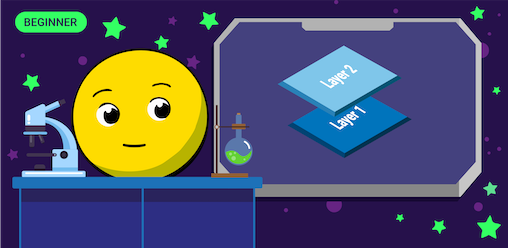
In the last few years, the crypto and blockchain industries experienced a real boom, and the number of users and transactions has also grown significantly. While no one can deny the revolutionary nature of the technology, it started to face issues with scalability — the capacity of the system to grow with the demand increase.
What Are Scaling Solutions For?
Decentralization means that computing power and consensus are distributed across the network, while security reflects the blockchain defense from malefactors and hacker attacks. Both features are considered essential for blockchain networks.
Highly secure decentralized systems often face problems with the transactions throughput, which created an issue, referred to as Blockchain Trilemma. It states that achieving simultaneously high levels of security, decentralization, and scalability is nearly impossible and that blockchain networks realistically can maximum achieve two out of three factors.
But there are many developers working on overcoming this problem and they have reached some significant results. Blockchain network scalability improvements can be categorized into Layer-1 and Layer-2 solutions. Each of them has a different mechanism, its own advantages, and complications.
The Importance of Scaling Solutions
While blockchain is a more fair and secure way to own and manage money, centralized financial institutions are much more effective in the terms of throughput. For example, Visa boasts 65 thousand transactions per second, while for Bitcoin this number’s only 7 and for Ethereum, it’s 15.
To compete with the centralized systems of payment processing, blockchain networks need to be more scalable to be able to accommodate increasing numbers of users, transactions, and data. If nothing is to be done, blockchains will be clogged up with the transactions stuck one after another. The system won’t be able to process all of them at once and it will create inequality in the user experience.
What is Layer-1 Blockchain?
Layer-1 scaling solutions focus on on-chain improvements. They modify the basic protocol and the architecture of the network to offer a better throughput. For example, Bitcoin, Ethereum, Binance Smart Chain, and Litecoin are Layer-1 blockchain networks. The Layer-1 scaling solution augments the base layer, or the protocol itself.
Sharding
Sharding was adapted from the distributed databases and became the most popular Layer-1 scaling solution. For sharding, the entire blockchain network is broken into pieces or datasets called shards, so it becomes easier for the nodes to maintain shards than the whole network. All the shards are processed at the same time allowing sequential work on numerous transactions.
Each node is also assigned to different shards. Individual shards provide proofs to the mainchain and interact with each other through cross-shards communication protocols to share addresses, general states, and balances.
Ethereum 2.0, the new version of the Ethereum blockchain, implements sharding as a scaling solution.
Another Layer-1 blockchain that uses sharding is Elrond. It managed to achieve the throughput of 100 000 TPS (transactions per second) via Adaptive State Sharding and a secure Proof-of-Stake consensus mechanism.
The Harmony blockchain network is another example of the project applying shards to achieve higher scalability. It focuses on using zero-knowledge proof and Decentralized Autonomous Organisations.
Consensus Mechanism Improvements
Some consensus mechanisms are more efficient than others. For example, Proof-of-Work used by Bitcoin, Ethereum, Litecoin, Doge, etc. offers a high level of decentralization and security. But at the same time, it’s rather slow, which makes many developers choose Proof-of-Stake when developing the networks.
Even existing blockchains can change the consensus mechanism and the best example is Ethereum which is planning to move to the Proof-of-Stake consensus mechanism to increase the capacity and decentralization of the blockchain, while still maintaining a high level of security.
In general, nowadays the most upgraded Layer-1 and Layer-2 blockchains adopt a Proof-of-Stake consensus mechanism or its variations. As it eliminates the need for the computers to compete for validating, PoS already has more space for scaling.
The Kava blockchain can be a good example of a Layer-1 network that achieves scalability by using a Tendermint Proof-of-Stake consensus algorithm to improve transactions on the EVM co-chain.
Solana is considered a new-generation Layer-1 blockchain protocol that uses a new and promising Proof-of-History consensus mechanism and managed to significantly increase the throughput with over 3000 transactions per second.
Other, a bit less popular, Layer-1 solutions for crypto include reparameterization and creating alternative Data Structures. The main advantage of all of those methods is that they provide the most effective large-scale improvements.
The Issues of Layer-1 Solutions
One of the main issues with the Layer-1 solution is that the network validator has to agree on the change through the hard fork. And it’s not always that easy because in some cases they would lose in profit. For example, when the blockchain moves from the Proof-of-Work to Proof-of-Stake miners will lose income and might deny the need for scalability.
What Is Layer-2 Blockchain?
The layer-2 solution focuses on creating an off-chain solution by running a parallel blockchain or constructing a third-party network on top of the original one. This second layer, in other words, called the computational layer, is used to decongest the main or parental network. It is the easiest and fastest way to improve the scalability of the blockchain.
The portion of the protocol’s transactions shifts to the adjacent blockchain architecture, which processes the transaction and only refers back to the parent chain to finalize the results. Layer-2 solutions are often combined with Layer-1 solutions.
The best layer-2 solutions include scalable bridges between legacy chains and decentralized applications that caused the discovery of new variations of PoS, such as Liquid Proof-of-Stake, delegated Proof-of-Stake, Hybrid PoS, and others.
The main ways of applying the Layer-2 solutions are Nestchains, Rollups, State Channels, and Sidechains.
Nested Blockchains
A nested blockchain is usually the additional network atop another blockchain. It usually requires a basic blockchain that sets the parameters for a broader network, while the transactions and smart contracts executions are on the interconnected secondary chains. Multiple networks can be built upon the main chain as child chains. The main chain delegates the operation to the child chain that processes it independently from the main chain and only then returns it to the parent. The participation of the main chain is required only if there is a dispute to resolve.
Sidechains
A sidechain is an additional chain adjoined to the main one. It is usually used for large-batch transactions. Sidechains use an independent consensus algorithm, different from the main chain and independently built from scratch. This mechanism can be optimized for speed and scalability. The main chain here maintains the security, confirms the batches of transactions, and resolves conflicts.
The difference between sidechains and state channels is the number of integral ways. All the transactions are recorded on the public ledger and visible to all the participants. Importantly, the breaches in the sidechains don’t affect the main chain.
A Plasma network is an example of a sidechain Layer-2 solution for Ethereum. It consists of small blockchains connected in a tree-like structure.
State Channels
State channels are implemented to facilitate the overall performance of the blockchain. They also improve the two-way communication between blockchain and off-chain transactional channels. A state channel doesn’t need validation by the nodes of the Layer-1, instead, it uses a multi-signature or smart contract mechanism. Completed transactions are recorded t the underlying network.
Examples of State Channels are Celer, Bitcoin Lightning, and Ethereum’s Lightning Network. The main issue with this way is that state channels lose some degree of decentralization to achieve greater scalability.
Roll-Ups
Roll-ups perform transaction operations off the main blockchain but post the related data to layer-1, thus securing the transactions on the basic layer. Thanks to the execution on the off level, the fees go down. Smart contracts run on layer-1, but execute the transactions on layer 2 using the data from the main blockchain. There are optimistic roll-ups that assume that transactions are correct by default and only run computation as a challenge via fraud-proof. Zero-knowledge roll-ups run computation off-chain and submit proofs of validity to the main chain.
Cartesi, Fuel Network, Optimism, and Boba are Layer-2 blockchains using optimistic roll-ups. Loopring, Immutable X, Starkware, and Polygon Hermez are the Layer-2 solutions that use zero-knowledge roll-ups.
The Issues of Layer-2 Solutions
The main issue with the Layer-2 crypto is that the chance to lose security here is much higher, so the users will trust a resilient project like Bitcoin or Ethereum easier for their track records of security. But now more often they will turn to Layer-2 networks due to the transaction speed and cost. So the experts think that the future of Layer-2 is in the targeted fields, while bigger blockchains will still dominate and focus on security.
Conclusion
Scalability is the main obstacle on the way to global crypto adoption. The solution is to build blockchains that can cope with the scalability trilemma since the implementation, meanwhile trying to improve existing networks to avoid the bottleneck. At the moment all the possible solutions can be divided into Layer-1 and Layer-2. It’s hard to compare Layer-1 vs Layer-2 solutions as both of them have pros and cons, though it’s possible that the future lies in the combination of both.

